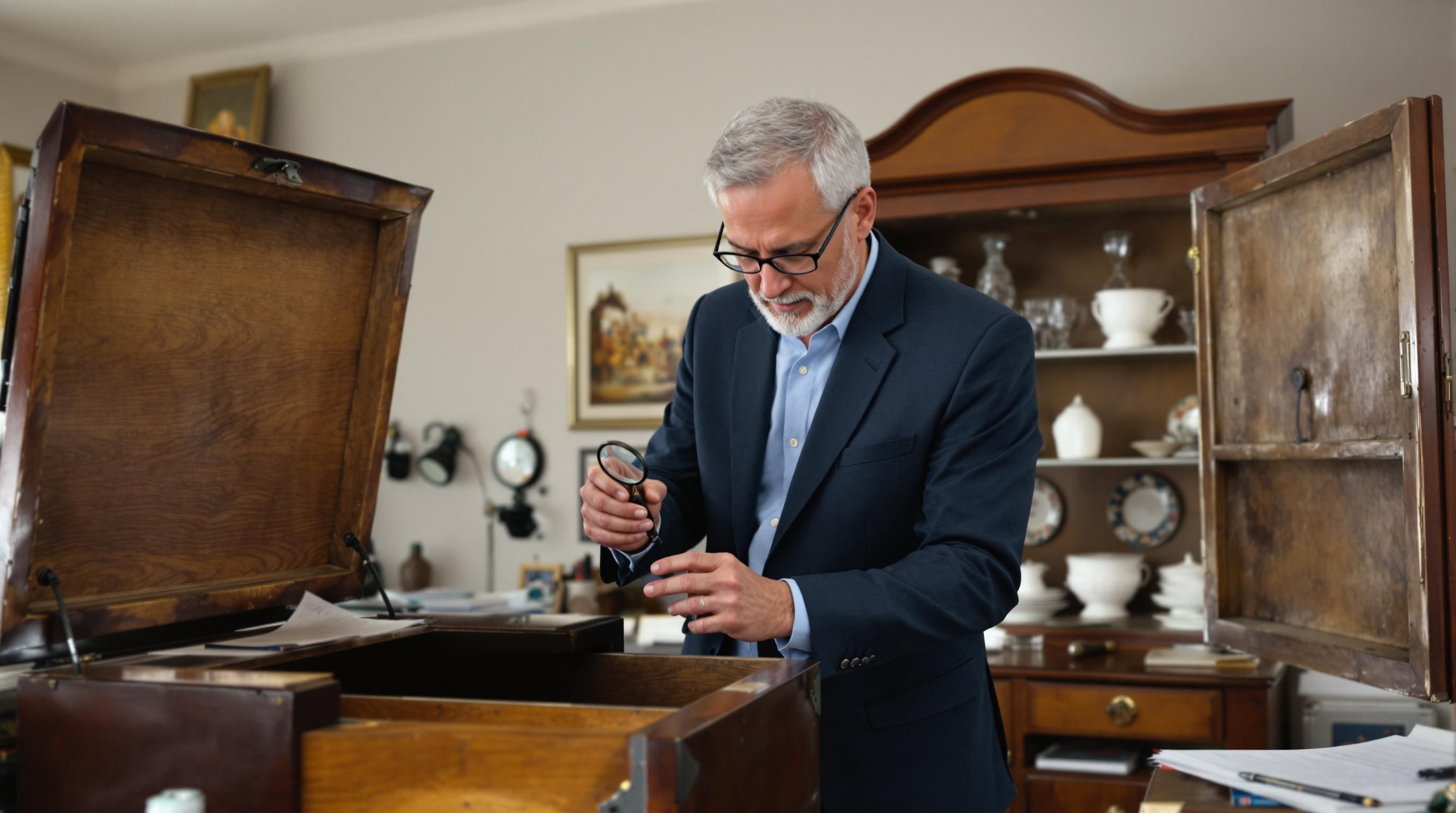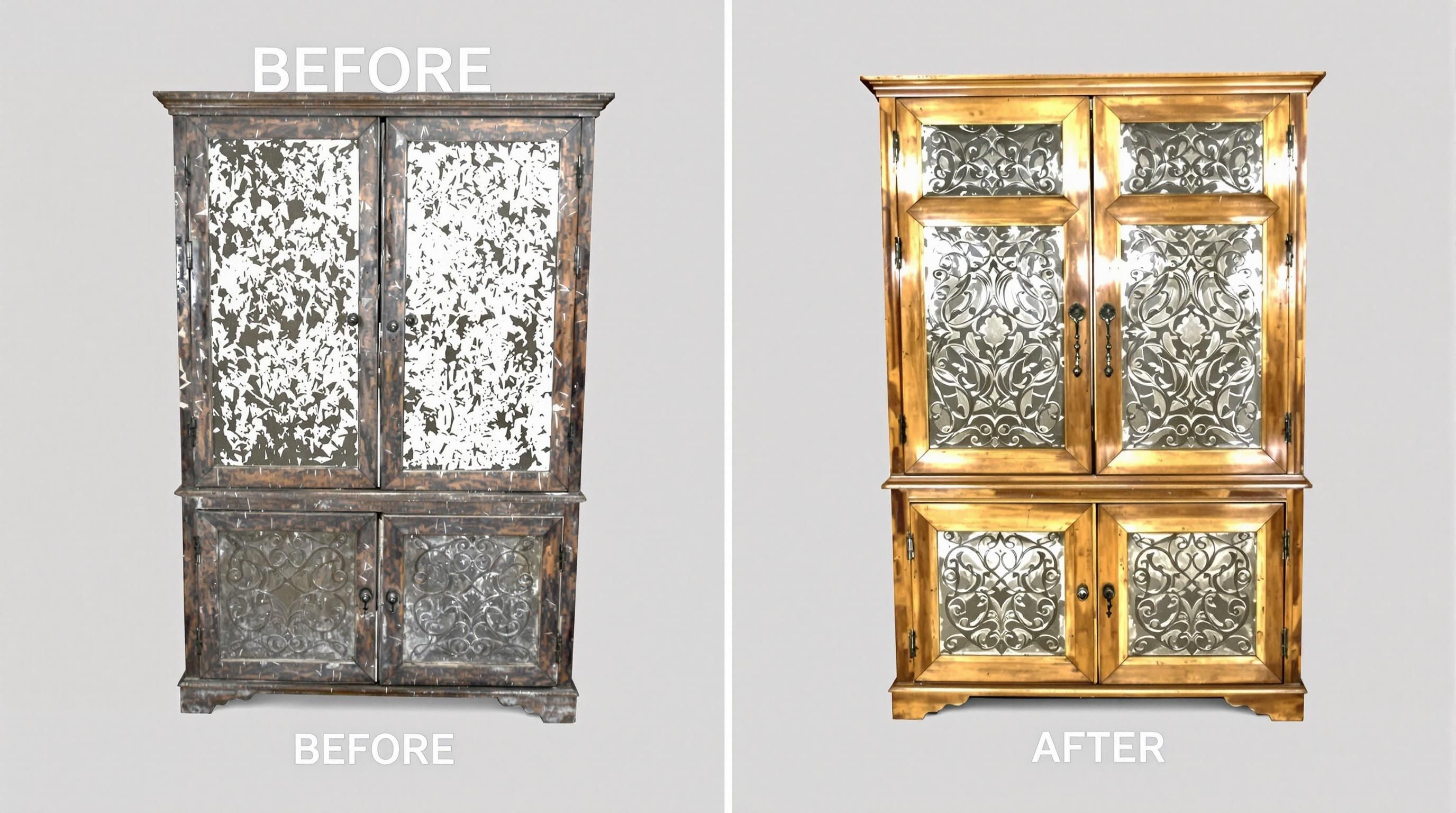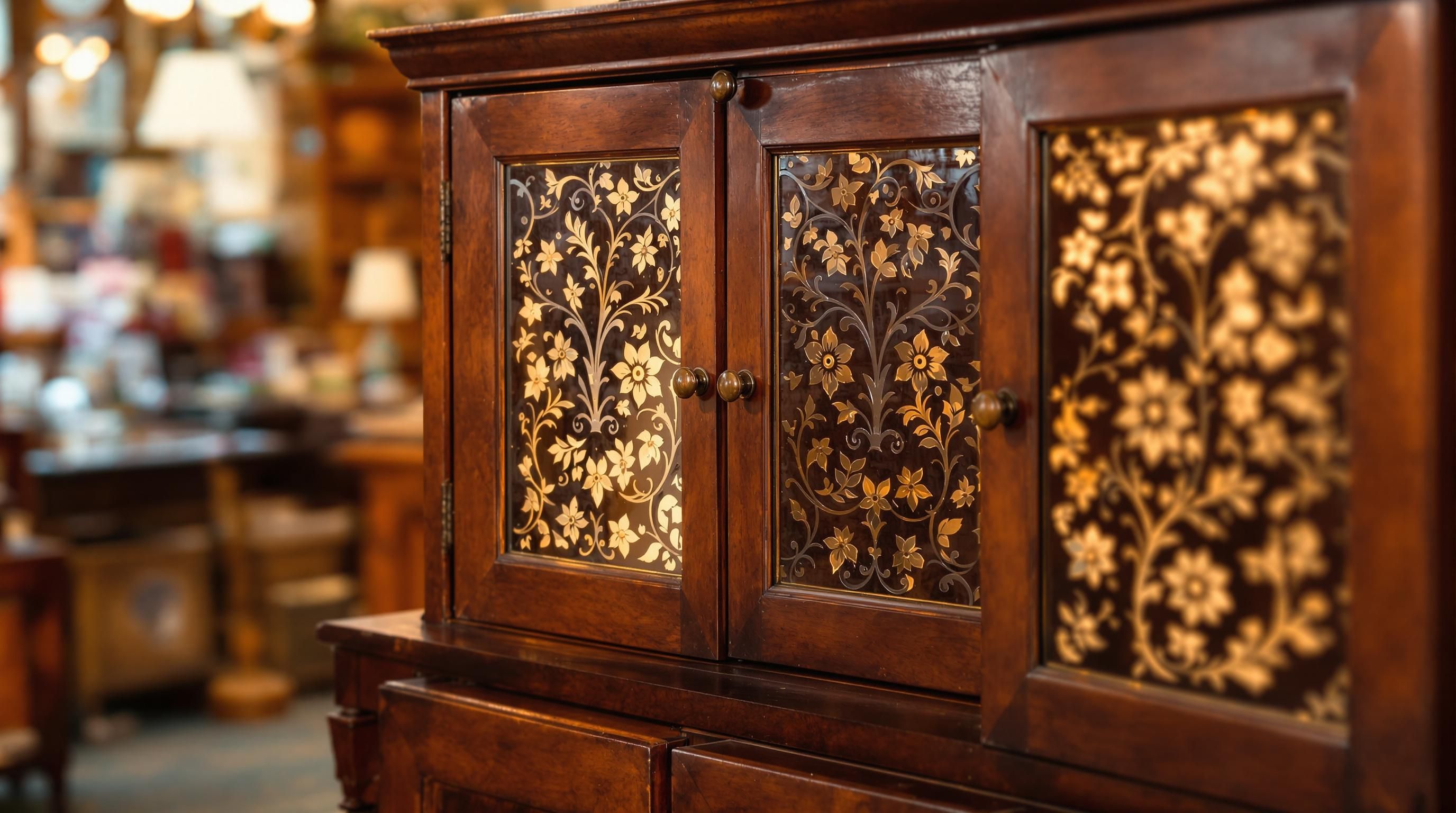Introduction to Antique Pie Safes
Antique pie safes represent a fascinating piece of American kitchen history. These functional cabinets, originating in the 18th and 19th centuries, were designed to store food safely before refrigeration became commonplace. Today, they’re highly sought after by collectors of primitive American furniture, valued both for their historical significance and rustic charm.
What is a Pie Safe?
Before refrigeration, households needed practical solutions for keeping food fresh and protected. The pie safe served this purpose admirably, with its ventilated design allowing air to circulate while keeping pests away from precious food items. The punched tin panels that are characteristic of these pieces were not just decorative—they were functional, allowing airflow while preventing unwanted visitors.
The Evolution of Pie Safes in American Homes
- Early 1700s
Origin in America
Pie safes were introduced to America by German immigrants who settled primarily in Pennsylvania. These early versions were simple but functional in design. - 19th Century
Peak Popularity
Pie safes reached their height of popularity throughout the 19th century, becoming a standard fixture in American kitchens. Craftsmanship became more refined, with more elaborate punched tin designs. - Late 1800s
Regional Variations
Different regions developed distinctive styles. Southern pie safes often featured punched tin panels with unique patterns, while New England versions might include painted decoration. - Early 1900s
Declining Use
With the advent of refrigeration, pie safes gradually fell out of practical use, though many remained in homes as decorative pieces. - Mid-20th Century
Collector Interest Begins
Antique dealers and collectors began recognizing the historical significance and aesthetic appeal of antique pie safes. - Present Day
Valuable Collectibles
Authentic antique pie safes have become prized collectibles, with the rarest examples commanding premium prices at auction.
How to Identify an Authentic Antique Pie Safe
Key Identification Features
Distinctive Characteristics
True antique pie safes share several common features that help in identification:
Punched Tin Panels: Perhaps the most identifying feature, these panels typically display folk art motifs including stars, hearts, geometric patterns, or wildlife scenes. The tin was punched to allow air circulation while keeping insects out.
Construction Materials: Authentic antique pie safes were typically made from locally sourced woods like pine, walnut, oak, or cherry, depending on the region of origin.
Joinery Methods: Look for hand-cut dovetail or mortise-and-tenon joints, which indicate pre-industrial craftsmanship. Machine-cut joints typically suggest a later reproduction.
Hardware: Original hardware will show appropriate signs of age and likely includes hand-forged hinges, latches, and pulls. Replacement hardware is common but can affect value.
Dimensions: Traditional pie safes are rectangular cabinets, usually standing between 5-6 feet tall, 3-4 feet wide, and 1-2 feet deep. Variations exist depending on regional styles and specific use.
Patina and Wear: Authentic pieces show consistent, appropriate aging. Look for a naturally developed patina, wear patterns on door edges, shelves, and around hardware.
Antique Pie Safe Authentication Checklist
Use this checklist to assess the authenticity of a potential antique pie safe
- Punched tin panels with hand-crafted designs
- Hand-cut joinery (dovetail or mortise-and-tenon)
- Period-appropriate wood with natural aging
- Authentic or period-consistent hardware
- Appropriate wear patterns and patina
- No modern nails, screws, or construction methods
- Proportions and dimensions consistent with period examples
Regional Variations
Pie safes vary significantly based on their region of origin:
Pennsylvania/Mid-Atlantic: Often feature elaborate punched tin designs with folk art motifs. Many were made by German settlers (Pennsylvania Dutch) and may include colorful painted surfaces.
Southern States: Typically simpler in design with regional variations in tin punching patterns. North Carolina and Virginia pie safes often feature heart, star, and eagle designs.
New England: Tend to have more refined construction, sometimes incorporating elements of other furniture styles popular in the region.
Midwestern: Often more utilitarian in design, frequently made of local hardwoods like oak or walnut.
Common Reproduction Signs to Watch For
- Machine-cut components: Perfectly uniform cuts and joints suggest modern manufacturing
- Phillips-head screws: These weren’t commonly used until the 1930s
- Artificially distressed finishes: Often too uniform or exaggerated compared to natural wear
- Perfect symmetry in punched designs: Hand-punched designs typically show slight irregularities
- Plywood or composite materials: These weren’t used in original antique construction
- Uniform patina: Artificially applied patina often looks too even compared to naturally developed aging
Factors Affecting Antique Pie Safe Value
What Determines Pie Safe Value
Key Value Factors
Age and Authenticity
Age is a primary determinant of value, with earlier examples (pre-1850) typically commanding higher prices. Documented provenance that confirms a pie safe’s age, origin, and ownership history can significantly increase its value. Authentication by a reputable appraiser is often necessary for high-value pieces.
Condition Assessment
Condition dramatically impacts value. Original finishes in good condition are highly desirable, though gentle cleaning and appropriate conservation are acceptable. Significant alterations, repairs, or refinishing can reduce value by 30-50%. Missing or replaced hardware, damaged tin panels, or structural issues all detract from value.
Craftsmanship and Design
The quality of workmanship evident in a pie safe significantly affects its value. Finely crafted examples with intricate punched tin designs, skilled joinery, and careful proportions command premium prices. Unusual or particularly artistic tin punching patterns are especially valued by collectors.
Regional Characteristics
Certain regional styles are more coveted by collectors. Pennsylvania Dutch pie safes with colorful paint decoration often sell at premium prices, as do Southern examples with distinctive regional motifs. Documentation of regional origin can substantially increase value.
Rarity and Historical Significance
Unusual design features, rare woods, or documented historical significance can dramatically increase value. Pie safes with documented connections to historical events, notable families, or made by known craftsmen can command significant premiums.

Current Market Values for Antique Pie Safes
Price Ranges by Type and Condition
Antique Pie Safe Price Ranges
Current market values based on research data (2023)
</tbody>
</table>
As evidenced by current listings on platforms like eBay, Facebook Marketplace, and specialized antique dealers, antique pie safes maintain a strong market presence. A key point to note is the significant price variance between basic examples and those with exceptional features or provenance.
According to market research from 1stDibs, particularly valuable pie safes can exceed $1,000, while JustAnswer antique experts suggest values ranging from $400-$600 for typical pine examples with punched tin panels. For collectors, understanding these price brackets is essential for making sound investment decisions.
Notable Auction Results
Notable Antique Pie Safe Auction Sales
Recent significant auction results for premium examples
| Category | Price | Notes |
|---|---|---|
| Museum-quality (pre-1850) | $3,000 - $7,000+ | Exceptional condition, original finish, documented provenance |
| Fine antique (1850-1880) | $1,000 - $3,000 | Excellent condition, original hardware, distinctive tin patterns |
| Good quality (1880-1900) | $600 - $1,200 | Good condition, might have minor repairs, original character intact |
| Standard examples (1900-1920) | $300 - $600 | Serviceable condition, may have replacement parts or refinishing |
| Reproductions/damaged pieces | $100 - $300 | Modern reproductions or heavily altered/damaged antiques |
</tbody>
</table>
Retail vs. Resale Values
It’s important to understand the significant difference between retail values (prices at antique shops, high-end dealers, and curated online platforms) and resale values (what an individual might realize when selling). Typically, retail prices are 30-50% higher than what private sellers might achieve through direct sales channels like online marketplaces or estate sales.

Buying and Selling Antique Pie Safes
Where to Find Authentic Pieces
Best Marketplaces for Buyers
Specialized Antique Dealers: Offer higher quality, authenticated pieces with appropriate provenance, though at premium prices.
Online Platforms: Websites like 1stDibs, Chairish, and Etsy feature curated selections of antique pie safes. These platforms often offer buyer protection and seller verification.
Auction Houses: Both traditional and online auctions can yield exceptional finds. Major houses like Christie’s and Sotheby’s occasionally feature fine examples, while regional auctions often have more accessible options.
Estate Sales and Local Markets: Facebook Marketplace, Craigslist, and local estate sales can offer great values, though authentication responsibilities fall to the buyer.
Antique Shows and Fairs: Seasonal events bring together multiple dealers, allowing for comparison shopping and direct negotiation.
Tips for Sellers
If you’re looking to sell an antique pie safe, consider these approaches to maximize your return:
Professional Appraisal: For potentially valuable pieces, invest in a professional appraisal from a qualified antiques appraiser.
Proper Documentation: Gather any provenance information, old photographs, or history related to the piece to enhance its marketability.
Appropriate Cleaning: Gentle cleaning without damaging the patina can improve presentation. Avoid refinishing or major repairs, which typically reduce value.
Quality Photography: Well-lit, detailed photographs showing all aspects of the piece are essential for online selling.
Choosing the Right Venue: Higher-quality pieces may warrant the commission fees of auction houses or specialized dealers who can reach appropriate collectors.
Authentication and Appraisal
Professional appraisers specializing in American furniture can provide detailed evaluation of age, authenticity, condition, and market value. For pieces potentially worth over $1,000, professional appraisal is generally recommended.
For basic authentication, consider:
- Antique dealer consultations (often free or minimal cost for basic opinions)
- Auction house specialists (many offer complimentary evaluation days)
- Online appraisal services (like JustAnswer, offering expert opinions for reasonable fees)
- Local historical society expertise (particularly for regionally-significant pieces)
Restoration and Preservation
Maintaining Value Through Proper Care
Conservation Best Practices
Cleaning: Use only gentle methods. Dry dusting with soft cloths for regular maintenance. For deeper cleaning, slightly dampened cloths with minimal mild soap if absolutely necessary.
Environment: Store in stable conditions away from direct sunlight, heating vents, and areas of high humidity or temperature fluctuation.
Handling: Support bottom when moving, never drag, and avoid placing in high-traffic areas where accidental damage is likely.
Hardware Maintenance: Clean original hardware gently without harsh chemicals. Loose hardware should be properly secured without damaging the surrounding wood.
Wood Nourishment: Occasional application of high-quality furniture wax (not spray polishes) helps maintain the wood. Apply sparingly and according to product directions.
When to Seek Professional Restoration
Some issues warrant professional intervention:
- Structural damage compromising stability
- Significant tin panel damage or loss
- Hardware replacement needs
- Insect infestation or active wood rot
- Veneer repair or replacement
- Complex finish restoration
Restoration vs. Value
As a general rule, less intervention is better for maintaining value. Structural repairs are acceptable when necessary for stability, but should be done with period-appropriate techniques and materials. Cosmetic restoration should be approached with extreme caution, as collectors generally prefer original patina and signs of age over new-looking finishes.
For valuable pieces, consult with a conservator specializing in American furniture before undertaking any significant restoration. Their expertise can help maintain the piece’s integrity and value.
Contemporary Appeal and Decorating with Antique Pie Safes
Antique pie safes continue to have strong appeal in modern interior design. Their versatile form and rustic character adapt well to various decorating styles:
- In farmhouse or country interiors, they serve as authentic focal points
- For modern spaces, they add warming character and historical depth
- In transitional settings, they provide textural contrast to sleeker elements
- As functional pieces, they offer unique storage solutions for kitchens, dining rooms, or living spaces
Beyond their collectible value, pie safes offer practical storage while adding distinctive character to contemporary homes. Their enduring popularity speaks to both their aesthetic appeal and their connection to American cultural history.
Common Questions About Antique Pie Safes
How do you identify a pie safe?
A pie safe is easy to identify by its rectangular cupboard shape, typically with two doors featuring punched tin panels. These pierced metal panels were functional, allowing air circulation while keeping insects and rodents away from stored food. Authentic antique pie safes will typically show hand-crafted construction techniques, appropriate woods for their region and period, and consistent aging patterns. The punched tin designs often feature folk art motifs like stars, hearts, geometric patterns, or wildlife scenes.
Why are antique pie safes so valuable?
Antique pie safes command high values for several reasons:
- Historical significance as practical pieces of pre-refrigeration American kitchens
- Quality craftsmanship and handmade construction
- Decorative appeal of folk art tin punching designs
- Regional variations that make each piece somewhat unique
- Limited supply of authentic examples in good condition
- Growing collector interest in primitive American furniture
Additionally, pieces with detailed punched tin designs, original finishes, and documented provenance typically command higher prices than simpler examples.
How old are pie safes?
Pie safes originated in America in the early 1700s, introduced by German immigrants who settled primarily in Pennsylvania. They reached peak popularity throughout the 19th century (1800s) when they became standard fixtures in American kitchens. Their practical use began to decline in the early 1900s with the advent of refrigeration, though many remained in homes as decorative pieces. The most valuable antique pie safes typically date from the early to mid-19th century (1800-1860).
What is an old-fashioned pie safe?
An old-fashioned pie safe (also called a kitchen safe or pie cupboard) was a common household item in 19th-century America designed to store baked goods and perishable foods before refrigeration was available. These rectangular cabinets featured punched tin panels in their doors and sometimes sides, allowing air circulation while keeping insects, mice, and dust away from food. They typically stood 5-6 feet tall and were made from locally available woods like pine, walnut, cherry, or oak. Beyond their practical function, many featured decorative punched tin designs that represented regional folk art traditions.
How can I tell if my pie safe is valuable?
To assess if your pie safe has significant value, examine these key factors:
- Age: Earlier examples (pre-1860) are typically more valuable
- Authenticity: Look for hand-cut joinery, appropriate woods, and construction methods
- Condition: Original finishes and hardware increase value substantially
- Tin Panels: Intricate or unusual punched designs add value
- Regional Distinctiveness: Certain regional styles command premium prices
- Provenance: Documented history increases value
For potentially valuable pieces, consider consulting with an antiques appraiser specializing in American furniture. Online valuation services can also provide preliminary estimates based on photographs and descriptions.
What's the difference between a pie safe and a jelly cupboard?
While similar in purpose, pie safes and jelly cupboards have distinct differences:Pie Safes:
- Feature punched tin panels in doors (and sometimes sides)
- Designed primarily for storing baked goods and perishable foods
- Typically taller and more substantial in size
- Often have multiple shelves for different food items
Jelly Cupboards:
- Usually have solid wood doors without tin panels
- Designed specifically for storing preserved foods like jellies and jams
- Generally smaller and more compact
- Often have fewer, sturdier shelves for holding heavy preserves
Both pieces were essential to pre-refrigeration kitchens, but served slightly different functions in food storage.
Investment Potential and Market Trends
As with many antiques, the market for pie safes has evolved over time. Current trends indicate stable to increasing values for exceptional pieces, particularly those with strong provenance, unusual designs, or excellent original condition. While not experiencing the rapid appreciation of some antique categories, quality pie safes have maintained their value well, particularly at the higher end of the market.
Factors driving continued collector interest include:
- American Heritage Connection: Growing interest in authentic Americana and early American craftsmanship
- Decorative Versatility: Practical adaptability to modern interiors
- Limited Supply: Decreasing availability of authentic pieces in good condition
- Design Appreciation: Growing recognition of the artistic merit in vernacular American furniture
For investors, the best opportunities typically lie in finding undervalued examples with distinctive features or untapped potential. Knowledge of regional variations and maker characteristics can provide significant advantages in identifying pieces likely to appreciate.
External Resources for Antique Pie Safe Research
WorthPoint: Antique Pie Safe Pricing Database
Comprehensive database of past sales with photographs, descriptions, and realized prices for antique pie safes.
Pie Safe - Wikipedia
Detailed information on the history, construction, and purpose of pie safes throughout American history.
Amish Outlet Store: Pie Safes Yesterday and Today
Educational article discussing historical context, valuation factors, and contemporary relevance of pie safes.
eBay: Antique Pie Safes Marketplace
Active marketplace featuring a wide range of antique pie safes at various price points, useful for current market values.
1stDibs: Premium Antique Pie Safe Collection
Curated selection of high-end antique pie safes with detailed descriptions and authenticated provenance.
JustAnswer: Expert Appraisals of Pie Safes
Professional appraisal service providing valuation guidance for antique furniture including pie safes.
The Herald: How to Tell a Pie Safe from a Jelly Cupboard
Expert guidance on distinguishing between similar antique kitchen furniture pieces.
Conclusion: The Enduring Legacy of Pie Safes
Antique pie safes represent more than just valuable collectibles—they are tangible connections to America’s domestic history. Their evolution from practical kitchen furniture to prized antiques reflects changing attitudes toward everyday objects and growing appreciation for vernacular craftsmanship.
For collectors, these humble cabinets offer rich rewards in historical significance, folk art aesthetics, and regional cultural expressions. Their continuing market strength speaks to their enduring appeal across generations of antique enthusiasts.
Whether valued for investment potential, decorative charm, or historical significance, antique pie safes remain cherished artifacts of American domestic life. By understanding their history, identification features, and value factors, collectors can make informed decisions when buying, selling, or simply appreciating these distinctive pieces of American furniture history.
Get a Professional Appraisal
Unsure about your item’s value? Our certified experts provide fast, written appraisals you can trust.
- Expert report with photos and comps
- Fast turnaround
- Fixed, upfront pricing
No obligation. Secure upload.
| Item | Price | Date | Auction House |
|---|---|---|---|
| Pennsylvania Dutch Painted Pie Safe (c.1840) | $6,825 | April 2023 | Sotheby's American Furniture |
| Southern Punched Tin Pie Safe (c.1860) | $3,950 | January 2023 | Christie's Americana Auction |
| Primitive Pine Kentucky Pie Safe | $1,200 | March 2023 | Potomack Company |
| Antique Virginia Walnut Pie Safe | $875 | November 2022 | Chairish (Online) |
| Early American Pine Jelly Cupboard/Pie Safe | $700 | February 2023 | Regional Auction House |




